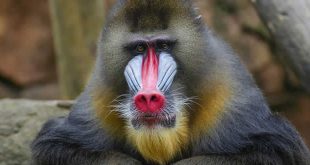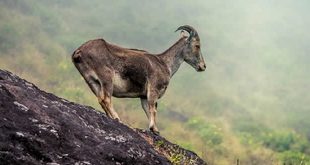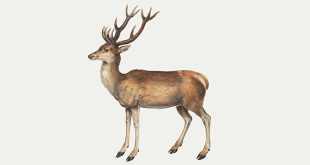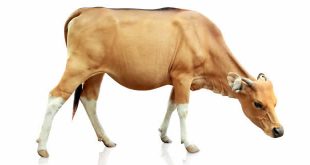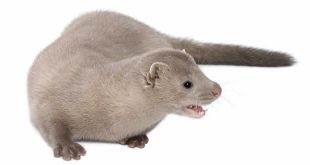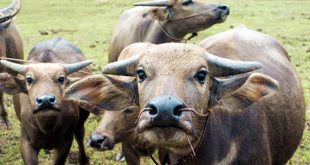 Gorilla — Gorillas, the largest of the living primates, are ground-dwelling omnivores that inhabit the forests of Africa. Gorillas are divided into two species and (still under debate as of 2007) either four or five subspecies. Its DNA is 97%–98% identical to that of a human, and are the next closest living relatives to humans after the two chimpanzee species.
Gorilla — Gorillas, the largest of the living primates, are ground-dwelling omnivores that inhabit the forests of Africa. Gorillas are divided into two species and (still under debate as of 2007) either four or five subspecies. Its DNA is 97%–98% identical to that of a human, and are the next closest living relatives to humans after the two chimpanzee species.
Gorillas live in tropical or subtropical forests. Although their range covers a small percentage of Africa, gorillas cover a wide range of elevations. The Mountain Gorilla inhabits the Albertine Rift montane cloud forests of the Virunga Volcanoes, ranging in altitude from 2225 to 4267 m (7300-14000 ft). Lowland Gorillas live in dense forests and lowland swamps and marshes as low as sea level.
Gorillas move around by knuckle-walking. Adult males range in height from 165-175 cm (5 ft 5 in – 5 ft 9 in), and in weight from 140–200 kg (310–440 lb). Adult females are often half the size of a silverback, averaging about 140 cm (4 ft 7 in) tall and 100 kg (220 lb). Occasionally, a silverback of over 183 cm (6 ft) and 225 kg (500 lb) has been recorded in the wild. However, obese gorillas in captivity have reached a weight of 270 kg (600 lb). Gorillas have a facial structure which is described as mandibular prognathism, that is, their mandible protrudes farther out than the maxilla.
Eastern gorillas are darker colored than Western gorillas, with Mountain gorilla being the darkest of all. Mountain gorillas also have the thickest hair. The Western lowland gorilla can be brown or grayish with a reddish forehead. In addition, gorillas that live in lowland forests are more slender and agile than the more bulky Mountain gorilla.
Almost all gorillas share the same blood type (B) and, like humans, have individual finger prints.
A silverback is an adult male gorilla, typically more than 12 years of age and named for the distinctive patch of silver hair on his back. A silverback gorilla has large canine teeth that come with maturity. Black backs are sexually mature males of up to 11 years of age.
Silverbacks are the strong, dominant troop leaders. Each typically leads a troop of 5 to 30 gorillas and is the center of the troop’s attention, making all the decisions, mediating conflicts, determining the movements of the group, leading the others to feeding sites and taking responsibility for the safety and well-being of the troop. Younger males called blackbacks may serve as backup protection.
Males will slowly begin to leave their original troop when they are about 11 years old, traveling alone or with a group of other males for 2–5 years before being able to attract females to form a new group and start breeding. While infant gorillas normally stay with their mother for 3–4 years, silverbacks will care for weaned young orphans, though never to the extent of carrying the little gorillas.
Gorillas are omnivores, eating fruits, leaves, shoots, and sometimes insects which make up only 1–2% of their diet. Gorilla spend most of the day eating. Their large sagittal crest and long canines allow them to crush hard plants like bamboo. Lowland gorillas feed mainly on fruit while Mountain gorillas feed mostly on herbs, stems and roots.
Gorillas are closely related to humans and are considered highly intelligent. A few individuals in captivity, such as Koko, have been taught a subset of sign language.
 Kids Portal For Parents India Kids Network
Kids Portal For Parents India Kids Network
